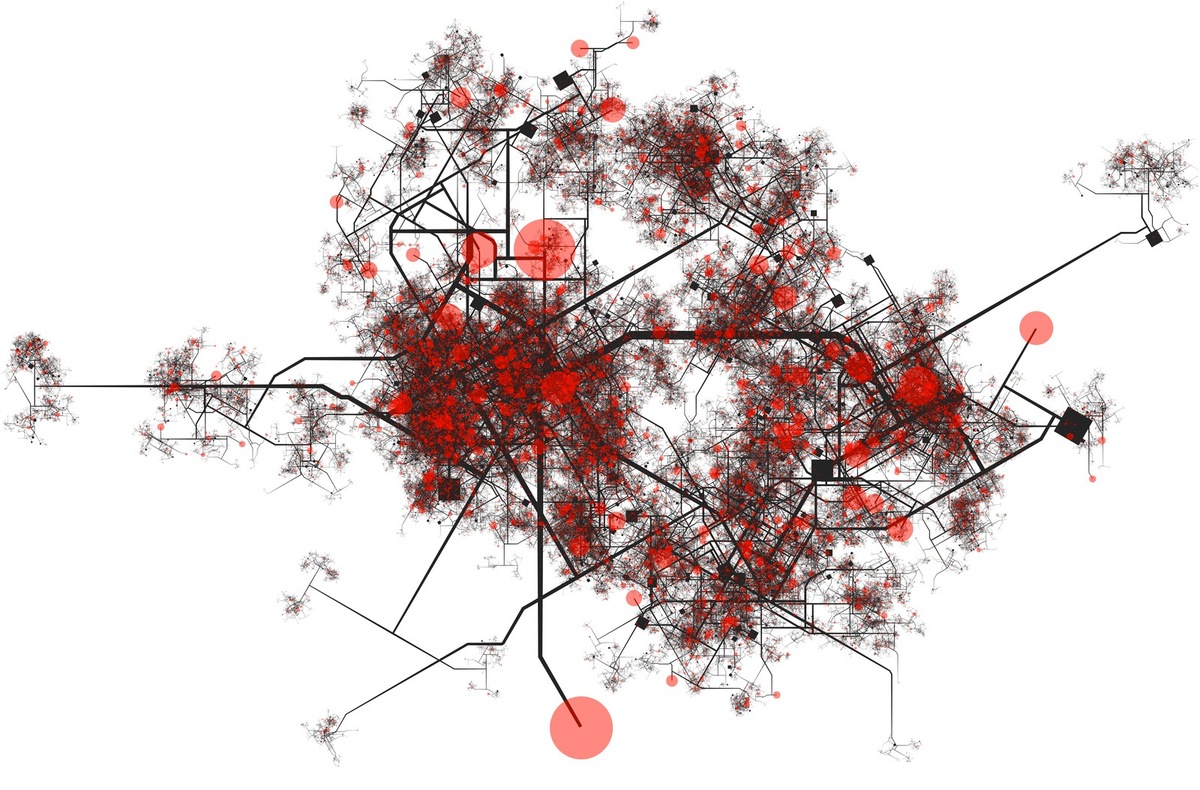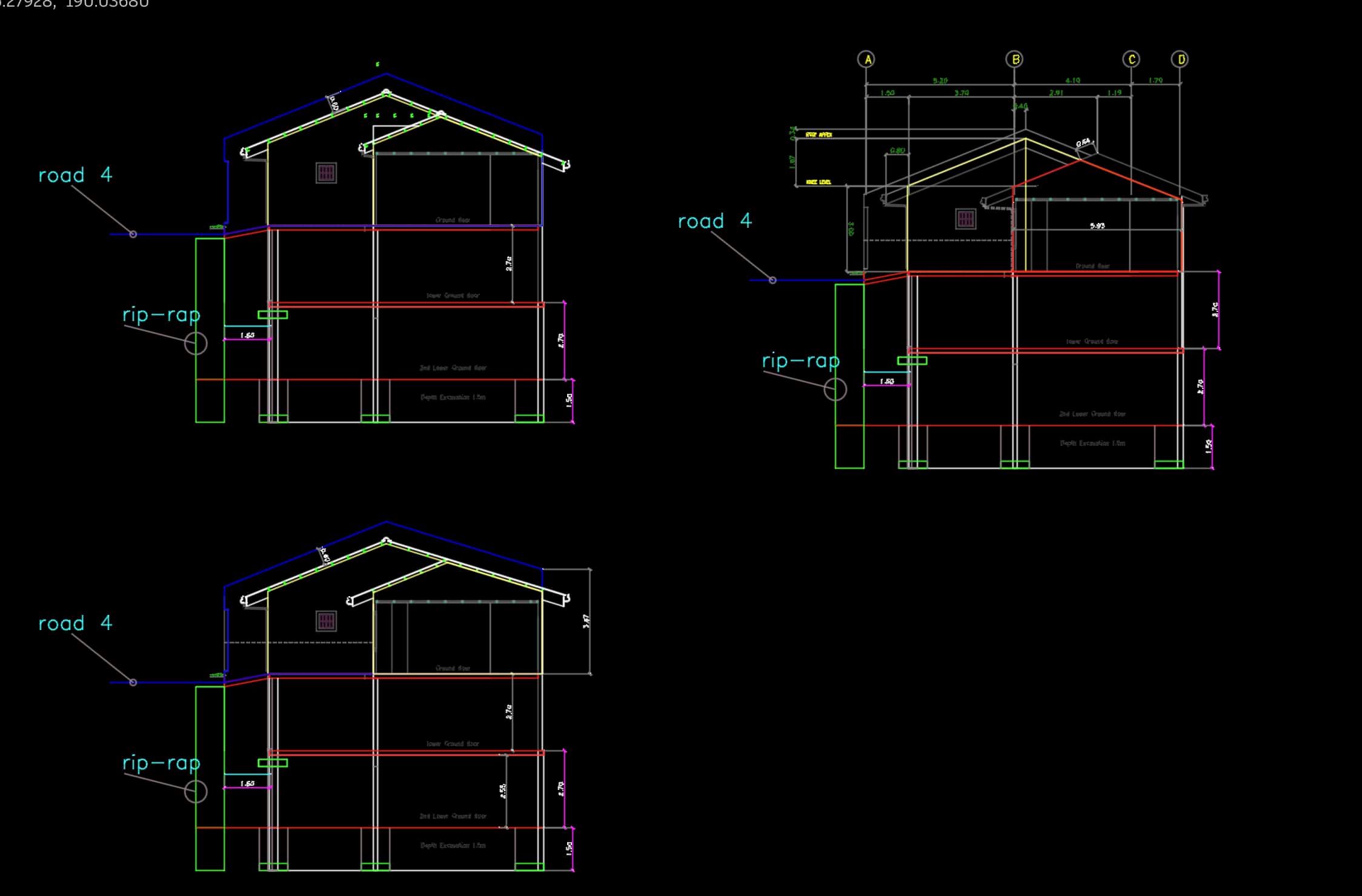Home>diy>Planning & Engineering>Why Was Euclidean Zoning Originally Used For Land Planning


Planning & Engineering
Why Was Euclidean Zoning Originally Used For Land Planning
Modified: October 20, 2024
Discover the origins of Euclidean zoning and its impact on land planning. Learn how planning engineering utilizes this method for efficient urban development.
(Many of the links in this article redirect to a specific reviewed product. Your purchase of these products through affiliate links helps to generate commission for Storables.com, at no extra cost. Learn more)
Introduction
In land planning and urban development, zoning is a crucial tool to regulate land use and ensure the efficient use of resources. One of the most widely used zoning systems is known as Euclidean zoning, named after the town of Euclid, Ohio, where it was first implemented in 1926. Euclidean zoning gained popularity due to its simplicity and clear separation of different land uses. However, its application and effectiveness have faced criticism over the years.
Euclidean zoning is a method of land planning that divides a municipality into separate zones, each with specific regulations regarding land use, building height, setbacks, and other factors. The underlying principle of Euclidean zoning is the segregation of incompatible land uses, such as residential, commercial, and industrial activities, to minimize conflicts and promote orderly development.
While Euclidean zoning was initially praised for its ability to provide predictability and protect property values, critics argue that it has limitations in fostering vibrant and sustainable communities. As land planning continues to evolve, it is essential to examine the origins, principles, advantages, criticisms, and the evolution of zoning practices beyond Euclidean zoning.
Key Takeaways:
- Euclidean zoning, while initially praised for its predictability, has faced criticism for promoting homogeneity and automobile dependency, leading to the evolution of more diverse and sustainable zoning practices.
- The evolution of zoning practices has embraced innovative approaches such as form-based zoning, mixed-use zoning, and transit-oriented development to create vibrant, inclusive, and sustainable communities that prioritize human well-being and environmental stewardship.
Origins of Euclidean Zoning
The origins of Euclidean zoning can be traced back to the early 20th century when urbanization and industrialization led to concerns about the impact of different land uses on community welfare. In the United States, the influential 1926 U.S. Supreme Court case Village of Euclid, Ohio v. Ambler Realty Co. solidified the legal foundations of Euclidean zoning.
The case involved a challenge to the zoning ordinance of the Village of Euclid, which prohibited certain industrial activities in residential areas. The Supreme Court upheld the constitutionality of Euclidean zoning, stating that communities have the right to enact zoning laws to protect the health, safety, and welfare of their residents.
Following the landmark case, many municipalities across the country adopted Euclidean zoning ordinances, incorporating the concept of separating land uses into distinct zones. This approach was based on the idea that spatial separation of incompatible activities would prevent nuisances, enhance property values, and provide a clear framework for urban growth.
Euclidean zoning also embodied the Progressive Era’s emphasis on scientific and rational planning. The early proponents of zoning, such as urban planner and architect Daniel Burnham and social reformer Jane Addams, believed that separating incompatible land uses would create healthier and more socially desirable neighborhoods.
The simplicity and ease of implementation of Euclidean zoning made it an attractive option for many communities struggling with the effects of urbanization. The concept of zoning by specific land uses, with clear regulations for each zone, provided a straightforward framework for urban planners to guide growth and development.
However, it is important to note that Euclidean zoning was not without its critics, even from its inception. Some urban planners and architects expressed concerns about the potential negative impacts of separating land uses too rigidly and the potential for creating homogeneous and disconnected neighborhoods. Nonetheless, Euclidean zoning became the dominant zoning practice in the United States and many other countries, shaping the physical and social fabric of communities for decades to come.
Principles of Euclidean Zoning
Euclidean zoning is based on several key principles that guide the allocation of land uses within a municipality. These principles aim to create order, prevent conflicts, and promote the well-being of residents. Here are the main principles of Euclidean zoning:
- Separation of Land Uses: The primary principle of Euclidean zoning is the physical separation of different land uses into distinct zones. Residential, commercial, industrial, and other land uses are assigned to specific areas, preventing incompatible activities from coexisting in close proximity.
- Use Regulation: Each zoning district has regulations that specify the permitted uses for that area. Residential zones may allow single-family homes, while commercial zones permit businesses and retail establishments. These use restrictions help maintain the character and function of each zone.
- Building Height and Density: Euclidean zoning often includes regulations related to building height and density. These regulations control the size and scale of structures within each zone, ensuring that buildings are compatible with the surrounding area.
- Setbacks and Lot Sizes: Zoning ordinances typically include requirements for setbacks, which determine the distance between a building and the property lines. Lot size regulations govern the minimum and maximum sizes of parcels within a zone, helping maintain consistent development patterns.
- Prohibited Uses: Euclidean zoning often includes a list of prohibited uses or activities within certain zones. For example, industrial activities might be prohibited in residential zones to prevent noise, pollution, and other disturbances.
- Consistency and Predictability: One of the main benefits of Euclidean zoning is its ability to provide consistency and predictability in urban development. By separating land uses and establishing clear regulations, property owners and developers can have a clear understanding of what types of activities are allowed in a particular area.
These principles of Euclidean zoning have shaped the physical landscape of communities, influencing the distribution of residential, commercial, and industrial areas. While this approach has provided a sense of order and control in urban planning, it has also faced criticisms for its lack of flexibility and potential negative impacts on community vitality and diversity.
Advantages of Euclidean Zoning
Euclidean zoning, despite its criticisms, has been widely used in urban planning for several decades due to its perceived advantages. These advantages include:
- Predictability: One of the key advantages of Euclidean zoning is its ability to provide predictability. With clear and well-defined land use regulations, property owners, developers, and residents have a clear understanding of what activities are allowed in each zone. This predictability can foster stable property values and reduce uncertainty in the development process.
- Orderly Development: Euclidean zoning promotes orderly development by separating incompatible land uses. This separation helps prevent conflicts between different activities, such as noise issues between industrial and residential areas. It also contributes to the creation of cohesive neighborhoods with similar land uses and characteristics.
- Protection of Property Values: By separating land uses and regulating development, Euclidean zoning aims to protect property values. Residential areas are shielded from potentially undesirable activities, while commercial and industrial areas are given space to grow and operate without negatively impacting nearby homes.
- Public Health and Safety: Euclidean zoning can contribute to public health and safety by preventing hazardous or incompatible land uses from coexisting. This includes keeping factories or chemical facilities at a safe distance from residential areas and ensuring the provision of adequate infrastructure and services in each zone.
- Efficient Resource Allocation: Zoning can help optimize the use of resources by allocating land for specific purposes based on their compatibility and demand. This allows for the efficient provision of infrastructure, transportation, and utilities to support the needs of each zone.
These advantages have made Euclidean zoning a popular choice for many municipalities around the world. However, it is important to acknowledge that these benefits come with potential drawbacks and limitations, which have led to the evolution of zoning practices beyond the traditional Euclidean model.
Euclidean zoning was originally used for land planning to separate land uses and create distinct zones for residential, commercial, and industrial purposes. This helped to reduce conflicts between different land uses and promote orderly development.
Criticisms of Euclidean Zoning
While Euclidean zoning has been widely used in urban planning, it has faced several criticisms over the years. Some of the key criticisms of Euclidean zoning include:
- Homogeneity and Lack of Diversity: Euclidean zoning often leads to the creation of homogeneous neighborhoods, with each zone having a single predominant land use. This can result in a lack of diversity in housing options and limited opportunities for mixed-use development, which can hinder community vibrancy and social interactions.
- Automobile Dependency: The separation of land uses in Euclidean zoning often leads to increased reliance on automobiles. Residential areas are separated from commercial and industrial zones, requiring residents to travel longer distances for work, shopping, and entertainment. This promotes car-centric development patterns and increases congestion and pollution.
- Inefficient Land Use: Euclidean zoning can result in inefficient land use patterns. Large areas designated for single uses, such as residential or commercial zones, can lead to underutilized land and a lack of flexibility to adapt to changing market demands. This can contribute to urban sprawl and the inefficient use of valuable land resources.
- Social and Economic Inequities: Critics argue that Euclidean zoning perpetuates social and economic inequities. Strict separation of land uses can result in lower-income communities being disproportionately located near undesirable land uses, such as highways or industrial areas, while affluent neighborhoods enjoy more favorable amenities and resources.
- Lack of Flexibility: The rigid nature of Euclidean zoning can limit adaptability to changing community needs and dynamics. Land uses and zoning regulations are often slow to respond to emerging trends and challenges, making it difficult to promote innovative and sustainable development practices.
These criticisms have spurred the evolution of zoning practices, with many cities and municipalities exploring alternative models such as form-based zoning, mixed-use zoning, and zoning that promotes walkability, transit-oriented development, and the preservation of historic character. These approaches aim to address the shortcomings of Euclidean zoning and create more vibrant, equitable, and sustainable communities.
Evolution of Zoning Practices
Recognizing the limitations of Euclidean zoning and responding to the changing needs of communities, urban planners and policymakers have been exploring alternative approaches to land use regulation. The evolution of zoning practices has focused on creating more flexible, sustainable, and inclusive communities. Some notable developments include:
- Form-Based Zoning: Form-based zoning shifts the focus from land use to the physical form and design of buildings and streets. It encourages mixed-use development, walkability, and the creation of vibrant, human-scale neighborhoods. The emphasis is on creating attractive and functional public spaces, promoting connectivity, and preserving the unique character of each area.
- Mixed-Use Zoning: Mixed-use zoning allows for a variety of compatible land uses within the same area. By integrating residential, commercial, and recreational activities, mixed-use zoning promotes vibrant neighborhoods that offer convenience, walkability, and a sense of community. It aims to reduce automobile dependency and create opportunities for live-work-play environments.
- Transit-Oriented Development (TOD): TOD focuses on creating compact, walkable communities centered around public transportation hubs. By promoting dense, mixed-use development within close proximity to transit stations, TOD aims to reduce reliance on cars, improve access to transportation, and enhance urban mobility while supporting sustainable growth.
- Inclusionary Zoning: Inclusionary zoning addresses the need for affordable housing by requiring or incentivizing developers to provide a certain percentage of affordable units within new developments. It helps foster socio-economic diversity and mitigates the potential for exclusionary housing practices, ensuring that people of varying income levels can live in the same community.
- Sustainable Zoning: Sustainable zoning practices incorporate environmental considerations, such as energy efficiency, water management, and green space preservation, into land use regulations. They promote sustainable building practices, encourage renewable energy integration, and prioritize the protection of natural resources, contributing to the development of environmentally conscious and resilient communities.
These evolving zoning practices aim to address the shortcomings of Euclidean zoning while creating more livable, equitable, and sustainable communities. They emphasize a holistic approach that considers not only land use, but also design, social equity, transportation, environmental impact, and community engagement.
As urban areas continue to evolve, it is essential for planners and policymakers to adapt zoning practices to meet the unique challenges and aspirations of their communities. By embracing innovative zoning strategies, cities can create more inclusive, vibrant, and sustainable spaces for residents and future generations.
Conclusion
Euclidean zoning, with its origins in the early 20th century, served as a pioneering land planning tool that aimed to regulate land use and create order in urban development. Its principles of separating land uses and providing predictability have brought certain advantages, including the protection of property values, public health and safety, and efficient resource allocation.
However, Euclidean zoning has also faced criticisms for its potential homogeneity, automobile dependency, inefficiency in land use, social and economic inequities, and lack of flexibility. As a result, zoning practices have evolved to embrace alternative approaches such as form-based zoning, mixed-use zoning, transit-oriented development, inclusionary zoning, and sustainable zoning. These approaches aim to foster more vibrant, diverse, and sustainable communities that meet the changing needs and aspirations of residents.
The evolution of zoning practices highlights the importance of creating balanced and inclusive communities that prioritize human-scale design, walkability, and access to amenities and services. By considering factors beyond land use, such as architecture, transportation, affordability, and environmental sustainability, urban planners can shape cities and towns that are more equitable, resilient, and enjoyable to live in.
As we continue to face global challenges, including rapid urbanization, climate change, and social inequalities, zoning practices will play a pivotal role in shaping the future of our communities. By embracing innovative approaches and staying responsive to the evolving needs of residents, zoning can contribute to creating sustainable and thriving cities that prioritize both human well-being and environmental stewardship.
In conclusion, Euclidean zoning provided a foundation for land planning practices, but its limitations have necessitated the evolution of zoning approaches that are more adaptable, diverse, and sustainable. By embracing these new zoning practices, communities can create spaces that foster inclusivity, encourage active lifestyles, support local economies, and promote environmental stewardship. The future of zoning lies in the ability to strike a balance between order and flexibility, ensuring that communities are vibrant, dynamic, and responsive to the needs of their residents.
Curious about the rules that define where businesses can set up shop? Our next discussion sheds light on "what does commercial zoning mean," a topic crucial for anyone involved in city planning or business development. Understanding these regulations can offer great insights into how cities grow and where opportunities lie.
Frequently Asked Questions about Why Was Euclidean Zoning Originally Used For Land Planning
Was this page helpful?
At Storables.com, we guarantee accurate and reliable information. Our content, validated by Expert Board Contributors, is crafted following stringent Editorial Policies. We're committed to providing you with well-researched, expert-backed insights for all your informational needs.















0 thoughts on “Why Was Euclidean Zoning Originally Used For Land Planning”